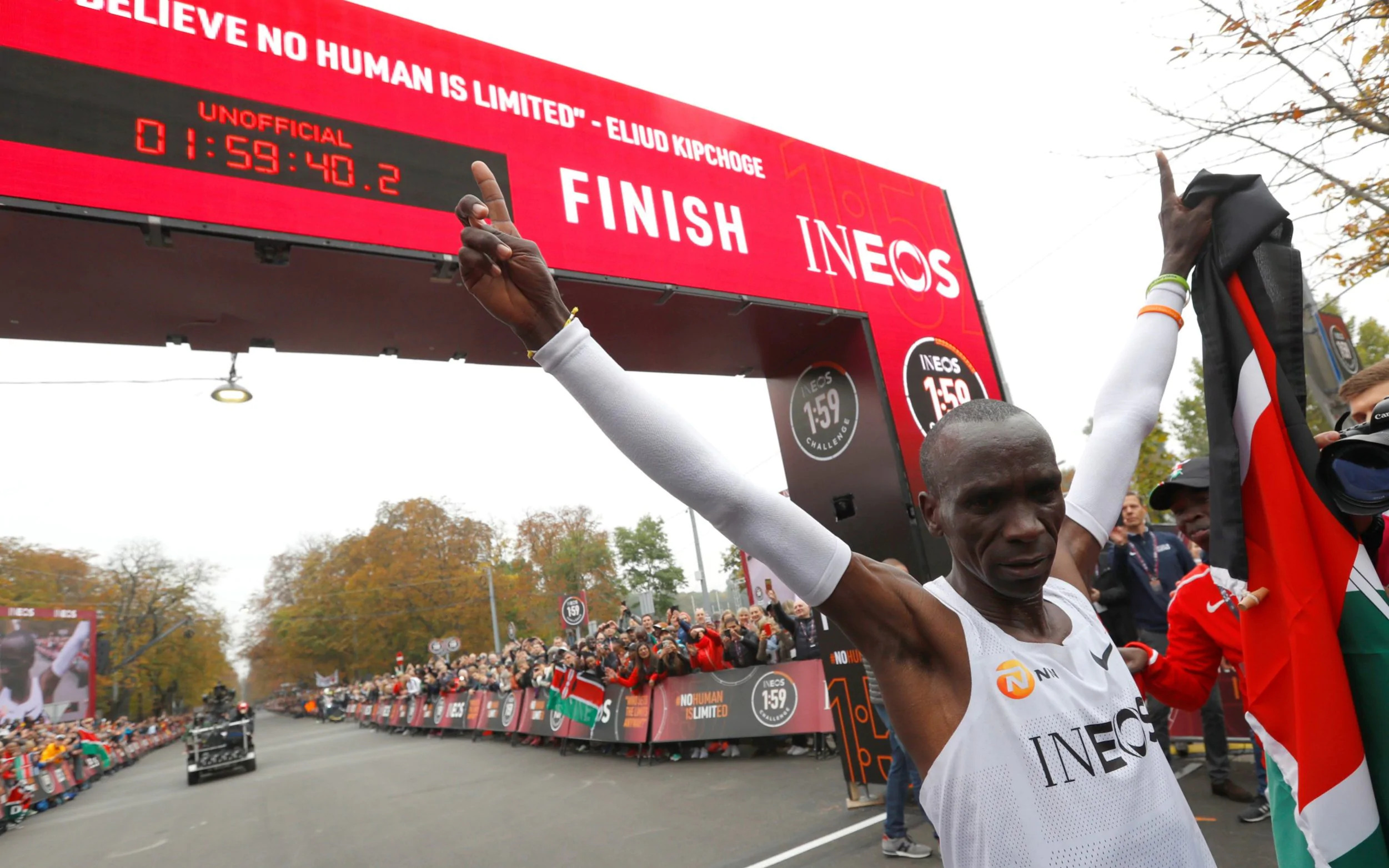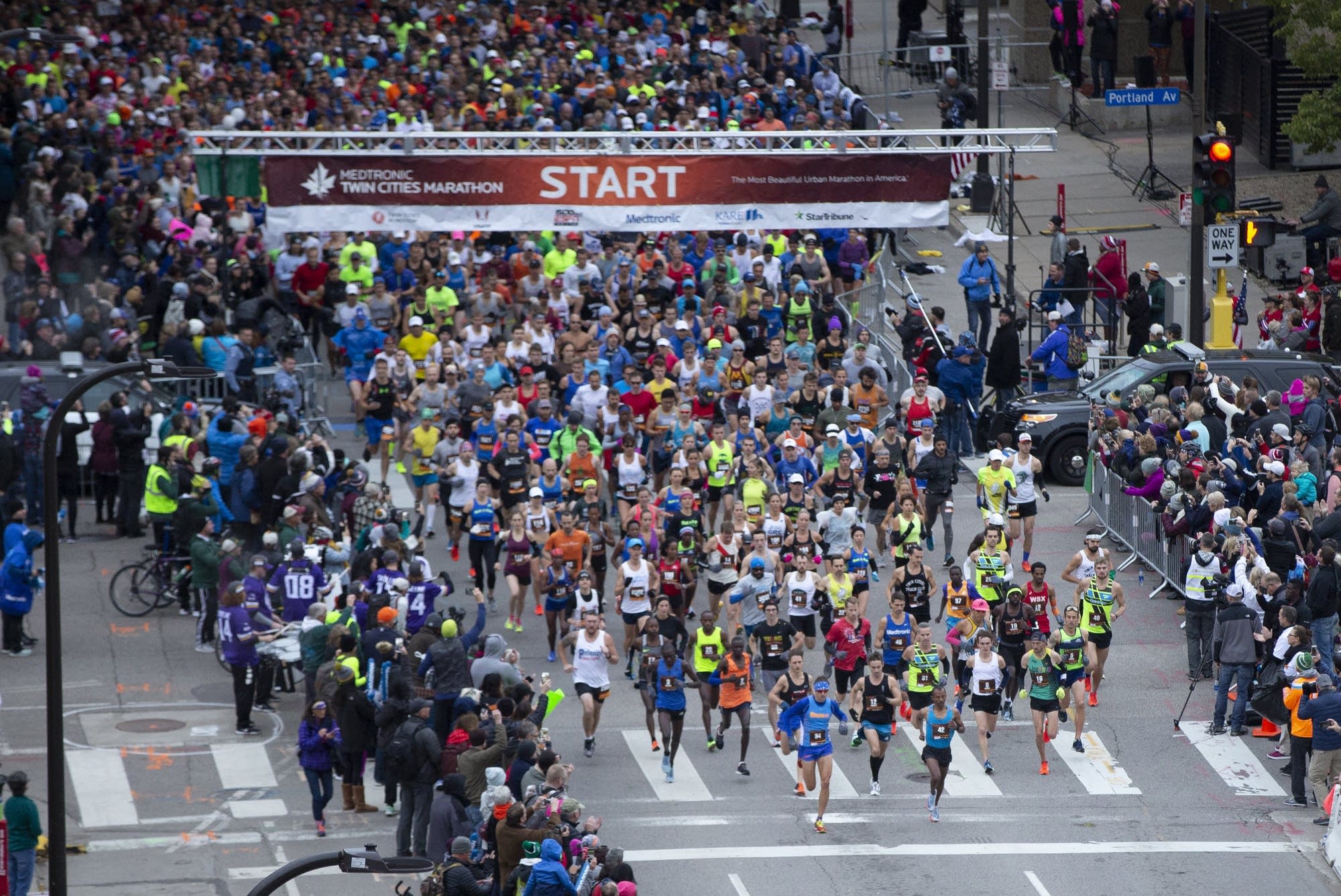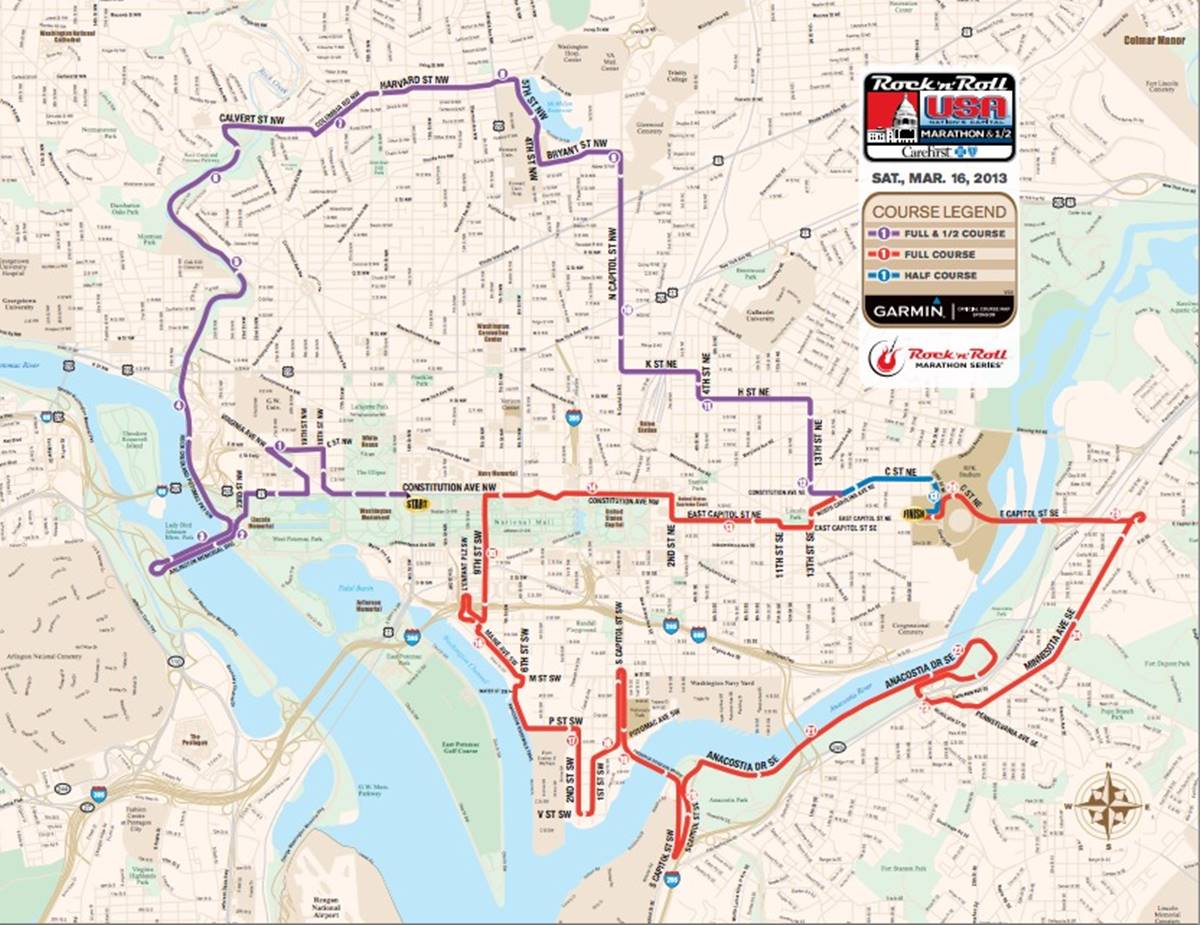Home>Misc>Featured>How Long After A Marathon Can I Run Again


Featured
How Long After A Marathon Can I Run Again
Modified: August 21, 2023
Find out how long you should wait before running again after completing a marathon. Featured tips and advice to help you recover and avoid injuries.
Introduction
Completing a marathon is an incredible accomplishment that requires months of training and dedication. After crossing the finish line, many runners are filled with a sense of pride and achievement. However, the question often arises: how long should one wait before running again after completing a marathon?
It is important to understand that running a marathon places a significant amount of stress on your body, both physically and mentally. The recovery period is crucial to allow your body to repair and rejuvenate before engaging in any intense physical activity again. Factors such as the distance covered during the marathon, your overall fitness level, and your body’s ability to recover will all play a role in determining how long you should wait before lacing up your running shoes again.
In this article, we will explore the factors that should be taken into consideration before deciding to run again after a marathon. We will discuss the physical and psychological recovery time required, common mistakes to avoid during the recovery period, and provide a detailed plan for a gradual return to running.
It is important to note that every individual is unique, and what may work for one person may not work for another. It is always recommended to consult with a healthcare professional or a certified coach before making any decisions regarding post-marathon recovery and when to resume running.
Factors to Consider Before Running Again
Before lacing up your running shoes after completing a marathon, there are several important factors to consider. These factors will help determine how long you should wait before resuming your running routine:
- Physical condition: Evaluate your physical condition after completing the marathon. Are you experiencing any pain, soreness, or injury? It is crucial to allow your body enough time to recover and heal before putting additional stress on your muscles and joints.
- Training intensity: Reflect on the intensity of your marathon training. If you followed a rigorous training plan that pushed your body to its limits, it is essential to provide ample recovery time to prevent overuse injuries and burnout.
- Overall fitness level: Assess your overall fitness level. If you were already in excellent shape before the marathon and regularly engaged in other physical activities, your recovery time might be shorter compared to someone who was relatively less fit.
- Mental and emotional state: Consider your mental and emotional state after the marathon. Completing a marathon can be both physically and emotionally draining. It is important to give yourself time to recharge and regain motivation before diving back into running.
- Age and past injury history: Age and past injury history can also impact your recovery time. Older individuals may require longer periods to recover, and those with a history of injuries should be more cautious and give themselves sufficient time to heal.
It is crucial not to rush the process of returning to running after a marathon. Taking the necessary time to recover will prevent potential injuries and allow your body to adapt and strengthen for future training.
Physical Recovery Time after a Marathon
Recovering physically after running a marathon is essential to allow your body to heal and repair the damage caused by the intense physical exertion. While the recovery time will vary for each individual, there are general guidelines to consider:
Immediate Recovery: In the immediate hours and days after the marathon, it is important to focus on rest and recovery. Your muscles will be sore and fatigued, and it is crucial to give them time to repair. Ice baths, gentle stretching, and light walking can help alleviate muscle soreness and aid in the recovery process.
First Week: The first week after a marathon is typically a period of active recovery. Engage in light activities such as walking or easy biking to promote blood flow and loosen up tight muscles. Avoid high-impact exercises and intense running during this time.
1-2 Weeks: During weeks one to two, gradually introduce cross-training activities such as swimming or cycling. These low-impact exercises will help maintain cardiovascular fitness without putting excessive stress on your muscles and joints. Listen to your body and be mindful of any lingering pain or discomfort.
2-3 Weeks: By weeks two to three, you can begin incorporating short and easy runs into your routine. Start with shorter distances and focus on maintaining a comfortable pace. Allow yourself proper rest days in between each run to ensure adequate recovery.
3+ Weeks: After three weeks, you can slowly increase the intensity and duration of your runs. Gradually build up your mileage and pace, always being mindful of your body’s response. Pay attention to any signs of overtraining or pain and adjust accordingly.
It is important to emphasize that these timelines are general guidelines, and the specific recovery time will depend on various factors, including your individual fitness level, age, and the intensity of your marathon training. Be patient with your body, listen to its signals, and don’t rush the process of returning to full running capacity.
Psychological Recovery Time after a Marathon
While physical recovery is crucial after running a marathon, it is equally important to allow yourself sufficient psychological recovery time. Running a marathon can be an emotionally and mentally challenging experience, and taking the time to recharge mentally is essential for long-term well-being. Here are some considerations for psychological recovery:
Reflect and Celebrate: Take time to reflect on your marathon experience and celebrate your achievement. Acknowledge the hard work and dedication that went into your training and the strength and determination that got you across the finish line. Reflecting on your success can help boost your confidence and motivation for future running endeavors.
Set New Goals: After completing a marathon, it is important to set new goals to maintain your motivation and mental focus. These goals can be related to running or other areas of your life. Having something to work towards can provide a sense of purpose and prevent post-marathon blues.
Embrace Active Rest: Give yourself permission to take a break from running and engage in other activities that bring you joy or relaxation. Engaging in hobbies, spending time with loved ones, and doing activities that don’t involve running can help prevent burnout and reignite your passion for running.
Address Post-Marathon Blues: It is not uncommon to experience post-marathon blues, a feeling of emptiness or lack of motivation after achieving a long-term goal. If you find yourself experiencing these emotions, reach out to fellow runners or a support network who can relate to your feelings. Sharing your experiences and emotions can help provide the support and encouragement you need to get back on track.
Seek Professional Help: If you find that your emotional recovery is taking longer than expected or you are struggling with post-marathon blues, consider seeking professional help. A sports psychologist or therapist can provide guidance and support during the recovery process and help you develop strategies to overcome any psychological challenges.
Remember, everyone’s psychological recovery will differ, and it is essential to listen to your own needs. Allow yourself the time and space to fully recover mentally so that you can return to running with renewed motivation, passion, and mental clarity.
Common Mistakes to Avoid When Returning to Running
Returning to running after a marathon requires a thoughtful and gradual approach to prevent injury and ensure a successful transition. Here are some common mistakes to avoid during this period:
- Jumping back into intense training: One of the biggest mistakes people make is trying to resume their running routine at the same intensity as before the marathon. Your body needs time to recover and adapt to the demands of running again. Start with easy runs and gradually increase your mileage and intensity over time.
- Ignoring pain or discomfort: It’s crucial to listen to your body and address any pain or discomfort. Running through pain can lead to further injuries and setbacks. If you experience persistent pain or discomfort, consult with a healthcare professional to determine the underlying cause.
- Neglecting proper warm-up and cool-down: Failing to warm up properly before running and neglecting to cool down afterward can increase the risk of injury. Prioritize dynamic stretching, mobility exercises, and gentle jogging before your runs, and incorporate static stretching and foam rolling afterward.
- Neglecting cross-training and strength training: Running puts a significant strain on your muscles and joints. Incorporating cross-training activities, such as swimming or cycling, and strength training exercises can help improve your overall fitness, prevent imbalances, and reduce the risk of overuse injuries.
- Skipping rest days: Rest days are just as important as your running days. They allow your body to recover, repair, and adapt to the training stimulus. Pushing through without proper rest can lead to fatigue, decreased performance, and an increased risk of injury. Make sure to prioritize rest and recovery in your training plan.
- Comparing yourself to others: Every runner is different, and comparing yourself to others can be detrimental to your own progress. Focus on your own journey and celebrate your individual achievements. Respect your body’s limitations, and do not feel pressured to meet unrealistic expectations set by others.
By avoiding these common mistakes, you can ensure a smooth and injury-free return to running. Remember, patience and gradual progression are key to maintaining long-term running success.
Gradual Return to Running Plan
A gradual return to running plan is essential to safely resume your running routine after completing a marathon. It allows your body to adapt and rebuild strength while minimizing the risk of injury. Here is a sample plan to guide your gradual return:
Week 1: Begin with light cross-training activities such as walking, biking, or swimming. Aim for 15-30 minutes of low-impact exercise, 2-3 times during the week. This will help maintain cardiovascular fitness and promote active recovery.
Week 2: Continue cross-training activities and introduce gentle running intervals. Start with a run-walk combination, alternating between 1-2 minutes of running and 1-2 minutes of walking. Aim for 2-3 sessions, keeping each run interval short and comfortable.
Week 3: Increase the duration of your run intervals while maintaining a comfortable pace. Gradually decrease the duration of walking intervals. Aim for 3-4 sessions during the week, with each interval lasting about 3-5 minutes.
Week 4: Start to decrease the amount of walking and increase the duration of continuous running. Aim to run for 10-15 minutes continuously, with short walking breaks if needed. Gradually increase the frequency of your running sessions to 3-5 times a week.
Week 5: Increase the duration of your runs to 20-30 minutes, focusing on maintaining a steady and comfortable pace. Aim for 3-4 sessions, allowing for proper rest days in between each run. Pay attention to any signs of fatigue or pain and adjust your intensity accordingly.
Week 6 and beyond: Gradually increase the duration and intensity of your runs, incorporating intervals, tempo runs, and long runs. Aim for a gradual increase in mileage, allowing your body to adjust to the demands of training. Remember to incorporate rest days and listen to your body to prevent overtraining.
It is essential to remember that this is just a general guideline, and the timeframe for returning to full running capacity may vary among individuals. Adjust the plan based on your fitness level, recovery progress, and any guidance from healthcare professionals or coaches.
Listening to Your Body and Adjusting Your Plan
When returning to running after a marathon, it is crucial to listen to your body and make adjustments to your plan as needed. While having a structured plan is important, it’s equally important to be flexible and responsive to your body’s signals. Here are some key aspects to consider:
Pay attention to fatigue and soreness: It is normal to feel some level of fatigue and muscle soreness during the return to running process. However, if the fatigue or soreness feels excessive or persists for an extended period, it may indicate that you need more recovery time or that you’re pushing yourself too hard. Adjust your plan by incorporating additional rest days or reducing the intensity and duration of your runs.
Watch out for pain and discomfort: Pain during or after a run should never be ignored. It may be a sign of an underlying injury or overuse. If you experience pain that is sharp, persistent, or worsening, it is essential to stop running and consult with a healthcare professional. They can assess the situation and provide guidance on how to proceed with your training plan.
Evaluate your energy levels: Notice how your energy levels fluctuate during your training. If you consistently feel depleted or lack motivation, it could be a sign that you’re pushing yourself too hard or not allowing enough time for recovery. Adjust your plan by incorporating additional rest days, reducing training volume, or focusing on activities that boost your energy and motivation.
Monitor your performance: Keep track of your running performance and how it aligns with your training plan. If you find that you’re consistently struggling to meet the goals or benchmarks outlined in your plan, it may be an indication that you need to modify your plan to better suit your current fitness level or recovery progress.
Be flexible with your schedule: Life can often throw unexpected challenges our way. If you need to deviate from your training plan due to commitments, illness, or other factors, it’s important to be flexible and make adjustments as necessary. Don’t be too hard on yourself if you have to miss a run or alter your schedule – the overall goal is long-term success and enjoyment of running.
Remember, you are the best judge of your own body. Trust your instincts and make adjustments to your plan based on how you feel. By paying attention to your body’s signals and adapting your plan accordingly, you can ensure a safe and successful return to running after a marathon.
Conclusion
Returning to running after completing a marathon is an exciting and challenging endeavor. It requires careful consideration of physical and psychological factors, as well as the implementation of a gradual and personalized plan. By taking the time to recover both physically and mentally, avoiding common mistakes, and listening to your body, you can ensure a successful and injury-free return to running.
Remember that recovery timelines vary from person to person, and it is essential to be patient with your body’s healing process. Consult with healthcare professionals or coaches to receive guidance tailored to your individual needs. Embrace the opportunity to reflect on your marathon experience, celebrate your accomplishments, and set new goals to maintain motivation and purpose.
As you embark on your gradual return to running, be mindful of any pain or discomfort, and adjust your plan accordingly. Prioritize proper warm-up, cool-down, cross-training, and strength training to support your overall fitness and prevent injuries. Remember that rest days are just as important as training days, and enjoy the process of gradually increasing your mileage and intensity.
Ultimately, your journey back to running after a marathon should be guided by self-care, self-awareness, and a deep understanding of your own body. Take the time to listen to your body’s messages, make adjustments when necessary, and honor the recovery process. By doing so, you’ll not only regain your running abilities but also ensure a long and fulfilling running journey ahead.









